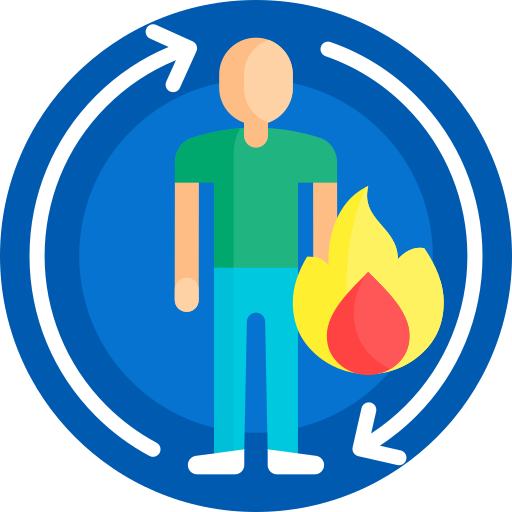I often wondered why anaerobic and aerobic exercises are named as they are. Surely, while running, you should not be out of breath to avoid “switching to anaerobic metabolism”. But why is it called anaerobic metabolism when doing short bursts of weight training even though I am barely out of breath? Recently, I refreshed my biology class 11 knowledge with the help of wikipedia and want to share my findings. This is just a very brief overview and lacks the scientific depth.
Energy sources
The primary energy source for cellular functions is Adenosine Triphosphate (ATP). However, our muscles also have access to other energy substrates like creatine phosphate, glycogen, fats, and proteins. ATP and creatine phosphate are readily available in muscle cells and can be quickly utilized for immediate energy needs. Glycogen, fats, and proteins are metabolized to produce ATP, providing a more sustained energy supply.
ATP + H2O → ADP + P + Energie
Anaerobic and Aerobic Metabolism
Anaerobic Metabolism
Generates energy without the use of oxygen. It’s fast but produces limited energy. The body primarily relies on stored ATP and creatine phosphate, and subsequently, for energy during these bursts.
ADP + Creatine Phosphate → ATP + Creatine
Aerobic Metabolism
This process requires oxygen and produces significantly more energy than anaerobic metabolism, though at a slower rate. It utilizes carbohydrates and fats as fuel sources, ensuring a continuous supply of energy over longer periods.
1 Glucose + 6 O2 + 32 ADP + 32 P → 6 CO2 + 6 H2O + 32 ATP
Processing Glucose may generae as much as 15 times ATP in comparison to anaerob metabolism.
Training Implications
Weight Training: Primarily involves anaerobic metabolism due to the need for quick energy bursts during short, intense efforts. The body relies on ATP and creatine phosphate for immediate energy. Supplementing with creatine can enhance the storage of creatine phosphate in muscle cells allowing for a greater reserve of quick energy. A side effect is that the high concentration of creatine in the muscle cells draws water into the cells through osmosis, making proper hydration important.
Cardio Training: Relies heavily on aerobic metabolism. Activities like running, swimming, or cycling demand sustained energy over a prolonged period, making efficient use of oxygen to convert carbohydrates and fats into ATP. The process of utilizing fats as an energy source typically starts after around 20 minutes of exercise.
